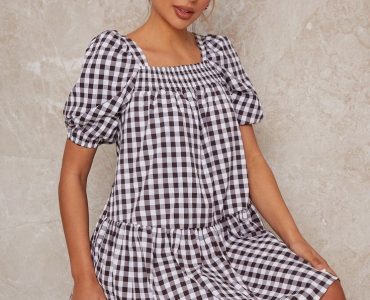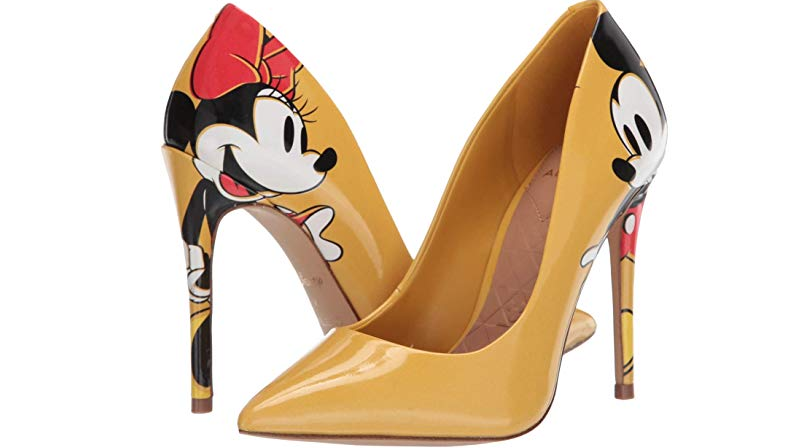The secret modern art doesctrine represents one of the more complex and conflicting areas of American patent law. In 1946, when the metallization project was decided and accelerated by Hobbes v. United States, the court had an impact on the effectiveness of sales, gifts, knowledge, public use, private use, advertising and sales patents in different ways, each Are dependent on a series of changes, corsets wholesale often a common series of factors, most of which is the US Patent and Trademark Office in the review of patent applications can not be assessed. The US Patent and Trademark Office (USPTO) and many patent attorneys agree that 35 U.S.C.’s new US Invention Act (AIA) Article 102 aims to completely eliminate the secret prior art. However, the court may also use the language as an opportunity to coordinate the field.
The secret principles of the existing technology are rooted in important policy considerations: the inventor may keep the invention as a trade secret for long-term retention, and only when the competitor begins to uncover the secret to get the invention quickly, thus greatly extending the effective grant patent. In order to avoid this result, the United States Former US No. 35 §102 provides that ” an individual is entitled to a patent unless the invention [b] is publicly used or sold in Date of application more than one year before the patent .
At the turn of the century, and explaining similar language, the Supreme Court considered the notorious case of the tights, Egbert v. Lippmann. An inventor gave a woman who later became his wife a new set of corsets or steel. Eight years later, he invited a friend to study the invention, so his wife “out, with a pair of corsets and a pair of scissors back, these corsets torn open, and out. ] Then explained how they were made and used. “Ten years later, the inventor applied for a patent.
The court has made a decision on the secret matter whether the sale, the gift, the knowledge or the use of the disclosure involves: “the inventor, giving or selling his equipment to another, being used by the insured or the defendant, unrestricted or Limited, or confidential, and so used, this use is public, even if the use and use of knowledge may be limited to one person.
The separation of the way from the thousands of years after the metalworking gift, disclosure and use of the case, the case of the appeal, elaborated on the basic facts . The inventors have discovered a new method of roughening a hard metal surface so that additional metal can be more closely integrated so that the mechanic can reconstruct the worn engine parts. In the first thirty months of applying for a patent, “he solicited the advice of a friendly engineer, who told him to thoroughly test the patent before the actual service.” In the first 29 months of the submission, the inventor commissioned Patent search. Twenty-three months before the submission, the inventor advertised in a trade magazine, announcing that he had a new hardened metallization process, despite no notice. The inventor also made a statement to the Executive Officer who provided him with a patent for the inventor and granted a patent license. “After thirty to twelve months, the inventor solicited and received sixty-six orders for the reconstruction of the part,” the practice of this process is so guarded, not openly aware; its nature is only to the employees of a few inventors and Consultants disclose that in all cases, in the case of distrust, not being abused. “The amount of uncertainty in the work is done at the expense of the inventor, and the other sales are the parties who know the” secret process. “An order for the first eight months of the patent application is to understand that the job is Experimental customer carried out.
Rely on Egbert, the Metallic Court 1 decided that the above sale and use were not open and therefore not a condition of patentability. “The inventor’s patent is the condition that, after preparing for the patent, he will not use his findings competitively; he must be in his own secret or” Legal monopoly. “However, for subsequent doctrinal consistency, the court has never determined which activities produced a patentable column. Perhaps the event that is defined is the discussion with the engineer or the ad. Perhaps this bar is triggered by the genius part, and perhaps only those who lead to the use of the inventor secret sales before getting the patent to get “competitive advantage over others”, although the metal 1 did not find out which sales might be, Did not provide factors to determine the competitive advantage.
Thirty years later, Hobbes v. American clarified that the general sale – regardless of purpose, confidentiality or the identity of the seller – produced 35U.SC Section 102 “Sale” patentable column, as long as the equipment was fully developed, patents and experiments The use has ended. However, it is determined whether the contract is and when to invent the “sale”, whether the inquiry or order is counted as sales, and whether the use of the experiment is over, and even in Hobbes there is no quick task.
The complexity soon hung up. Considering a few related doctrines, all of these are legally applicable laws: the sale itself may be experimental use, thus exempting Section 102 “sell” the patentability clause; the sale rights do not make the equipment “sold”; between legal entities The seller and the end user do not need to know or agree to sell; if no sample is provided to the customer, the entity may be in the presence of the product, and the seller may not be required to sell the goods; The “temporary” model presented to potential buyers may hinder patentability unless the details of the invention of the potential buyer are described as unsuitable prior to the sale of the agreement; similarly, the disposition of the origin of the income may No; the list of prices is sufficient to be invented; third-party experimental use may trigger a fatal bar, except under the supervision and control of the patent applicant.
Doctrine multiplication has a side effect: an independent inventor who seeks an investor or an independent inventor before seeking an investor or a client – itself is an increasingly expensive sport – is likely to be in conflict with at least one “sale” exception. Complex inventors and large innovative entities are better able to navigate these deceptive waters, and the courts must deal with strong de facto cases of specific sales and scattered in a better part of the century.
It may be appreciated that the United States Invention Act amended 35U.SC §102 and now states that ” an individual is entitled to a patent unless the claimed invention is publicly available, sold or otherwise obtained.” According to many readings, “Or publicly available” language has changed the “use” and “sales” provisions, eliminating the ability of secret prior art to form a patent. It remains to be seen whether the court will take such an analysis, since the patent submitted under the United States Invention Act is usually not yet released, let alone questioned in court.
However, in addition to the secret prioritized wholesale classification of the existing technology, if the “public use” is read into the “use” and “sales” terms, you can choose a choice: sales can simply be used with the current processing, gifts, and other disclosures The Article 102 of the Pre-Trial Law has been required, and the public can access the case for non-economic purposes (such as gifts or demonstrations) that meet the conditions of public use. Full secrets may prevent gifts, disclosures and use of the “pre-emptive rights” Article 102 “Public Use” column, just as the lack of safety makes the corset steel available to the public. In fact, the Federal Circuit may have been in this direction to the controversial “sale” situation.
At the Delano farm, after deciding on AIA, but explaining the patent application before the AIA and applying the former AIA law, the third party gets under the control of improved grape varieties under oral confidentiality conditions. However, the third party then handed the grape plant to the other two grape growers within four years. They all knew that the improved grapes were the main competitive advantage, all of which were planted on hundreds of places visible on public roads plant.
By most of the measures, if any of these transfers or activities are offered for sale, then they will make these plants not affected under the metallization. There is evidence that, as the lower court has pointed out, one of the third parties sold the other grapes and served as mentors and exchanged “grafts” between the two sides. The two sides may exchange the social or non-monetary benefits of the plant and may allocate plants to each other to understand the future sale of grapes. Test briefings and complaints vary, claiming that a third party has grafted grapes during normal business, and the patent is not valid under 35 U. S. C. Article 102 (b) – although it does not specify whether the plaintiff wishes to apply the “public use” or “sale” bar. If the harvest is good, as long as the conditional offer to sell grapes, and perhaps a few samples of grapes together, should be enough to quote.
But the gift is essentially selling the problem has not been resolved. On the contrary, the Federal Circuit in the “public use” principle to determine the problem, the application of “full secret” test is very reminiscent of Egbert and its descendants. The court cited factors such as the inability to identify grape varieties by simply looking at grapes, compared to the size of the site, the limited number of sown areas, the unqualified cultivation, and the fact that no other person recognized the evidence to test the breed, especially the third party Rattan test is confidential.
In function, the back of the AIA $ 102 ‘[open] sale of the bar’s application may look much like the Delano farm. The decision of the court will depend on whether the sale or offer is “publicly sold” – that is, the party that does not have sufficient confidentiality obligations and whether there is a public use. Under this system, a backyard inventor does not need to pass several rigorous restrictions on the sale of samples to find his patent invalid: at least if these secret sales did not cause new art, reverse engineering or more than one year before the public application patent application The Like secret use, secret sales may become publicly sold in the case of too much distribution.
It is important that, for the courts that hear such cases, records will be a public issue and a measure taken by the Parties for confidentiality. The court may turn to decide what kind of “restricted or restricted or confidential ban” is sufficient to prevent sales from becoming “provided to the public” rather than sorting old sales receipts and oral testimony.
Finally, the Delano farm should provide a pacification solution to the courts that are plagued by the potential impact of the US Department of Defense 35 U.C.C. Section 102 – Review of gifts based on more reasonable “public access” criteria, rather than metallized sales rules, did not lead to any terrible march. At least should provide and sell similar reviews should be worse.


